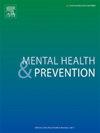探索泰缅边境人道主义援助工作者抑郁与创伤后应激障碍的关系
IF 2.4
Q2 Medicine
引用次数: 0
摘要
人道主义援助工作者面临着高度的压力,导致出现抑郁症和创伤后应激障碍(PTSD)等心理健康问题的重大风险。目的了解泰缅边境地区外籍家庭佣工抑郁和创伤后应激障碍的患病率,并探讨影响这些状况的因素。方法采用分层随机抽样方法,于2023年10月至2024年9月对泰缅边境4个省份的424名住院护士进行横断面调查。采用Logistic回归分析抑郁症与PTSD的相关因素。结果19.8%(95%置信区间:16.28 ~ 23.89)的被试出现抑郁症状,26.4%(95%置信区间:22.43 ~ 30.83)的被试出现PTSD症状。抑郁症与房屋所有权、不正常的家庭关系和工作部门的角色有关,而创伤后应激障碍与睡眠不足、家庭支持不足、继发性创伤压力和生活质量差有关。高度倦怠、压力和抑郁也是显著的危险因素。生活质量较低的工人患抑郁症的可能性是其3.45倍(调整优势比3.45,95% CI: 1.61-7.40),患PTSD的可能性是其2.27倍(调整优势比2.27,95% CI: 1.25-4.13)。结论近20%的人道主义救援人员患有抑郁症,超过25%的人报告有创伤后应激障碍。抑郁症与房屋所有权、家庭关系和工作部门有关。PTSD与睡眠不足、家庭支持不足、继发性创伤应激和低生活质量有关。高度倦怠、压力和抑郁是显著的风险。改善生活质量和提供精神卫生支助是必不可少的干预措施。本文章由计算机程序翻译,如有差异,请以英文原文为准。
Exploring the association of depression and post traumatic stress disorder among humanitarian aid workers along the Thai-Myanmar border
Background
Humanitarian aid workers (HAWs) are exposed to high levels of stress, resulting in substantial risks for mental health issues such as depression and post-traumatic stress disorder (PTSD).
Objective
This study aimed to determine the prevalence of depression and PTSD among HAWs along the Thai-Myanmar border and identify factors influencing these conditions.
Methods
This cross-sectional study surveyed 424 HAWs from four Thai-Myanmar border provinces from October 2023 to September 2024, using stratified random sampling. Logistic regression was applied to analyze factors associated with depression and PTSD.
Results
Depression was identified in 19.8 % (95 % Confidence Interval: 16.28–23.89) of participants and PTSD symptoms were observed in 26.4 % (95 % CI: 22.43–30.83) of HAWs. Depression was associated with homeownership, dysfunctional family relationships, and roles in job sectors while PTSD was linked to poor sleep, moderate family support, secondary traumatic stress and poor quality of life. High burnout, stress and depression were also significant risk factors.Workers with a lower quality of life were 3.45 times (Adjusted Odds Ratio 3.45, 95 % CI: 1.61–7.40) more likely to experience depression and 2.27 times (AOR 2.27, 95 % CI: 1.25–4.13) more likely to experience PTSD.
Conclusion
Nearly 20 % of humanitarian aid workers experienced depression, and over 25 % reported PTSD. Depression was linked to homeownership, family relationships and job sectors. PTSD was associated with poor sleep, moderate family support, secondary traumatic stress and low quality of life. High burnout, stress and depression were significant risks. Improving quality of life and providing mental health support are essential interventions.
求助全文
通过发布文献求助,成功后即可免费获取论文全文。
去求助
来源期刊

Mental Health and Prevention
Medicine-Psychiatry and Mental Health
CiteScore
2.10
自引率
0.00%
发文量
22
审稿时长
24 days
 求助内容:
求助内容: 应助结果提醒方式:
应助结果提醒方式:


